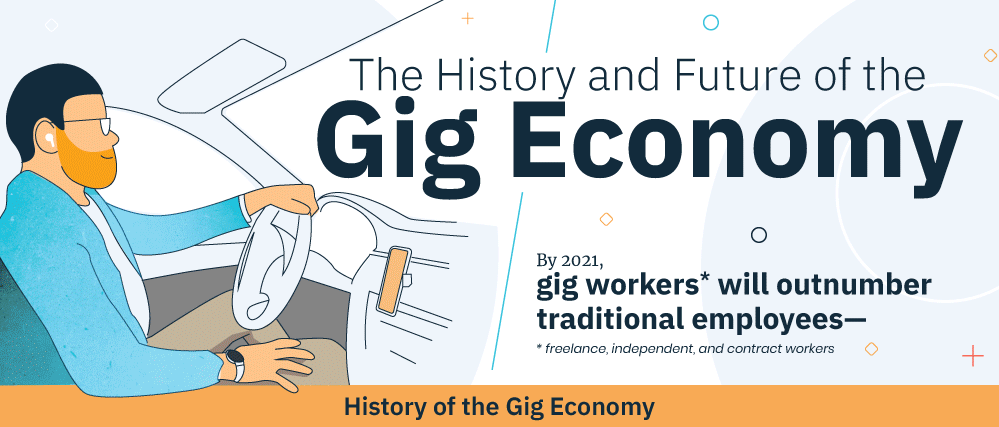Gig work, such as driving, delivery, and rental is becoming easier and better with apps like Uber, Lyft, and Airbnb. But gig jobs are much older than you may think. Since 2009, “gig economy” has been referred to part-time freelance work, but the start of the gig economy starts all the way back in 1915, when jazz musicians coined the term “gig” to refer to performances. By the 1930s during the Great Depression, many farmers had to sell their land due to drought and falling prices, but the 25% unemployment made finding steady work nearly impossible and most found work as migrants, moving from farm to farm to help the harvest of crops. In the mid-1940s the rise of temp agencies, like Russ Kelly Office Services which began offering typing services, and eventually, in 1948, manpower, inc. was founded to provide temporary staff for companies in need. Jumping to 1995, 10% of all Americans worked in alternative employment, whether it be temps, contractors, or on call workers. In 1996, Craig Newmark started an email newsletter and soon the list grew beyond local events and started to include nearly everything; from apartments to job opening, thus craigslist.com was born. In 1999, Upwork was created to bring visibility and trust to remote workers, in 2005, Amazon Mechanical Turk made a crowdsourcing marketplace for simple, repetitive tasks that AI can’t do and also in 2005 Airbnb was created in 2005 by roommates as a way to make the cost of rent cheaper and despite initial struggles in the beginning, by 2008, Airbnb was worth $38 billion, and in 2010, 2 entreprenuers realized how hard it was to find rides and made Uber – just five years later, Uber had accepted 1 billion rides.
Find out more about the future of gig work and how it may be in trouble here.


